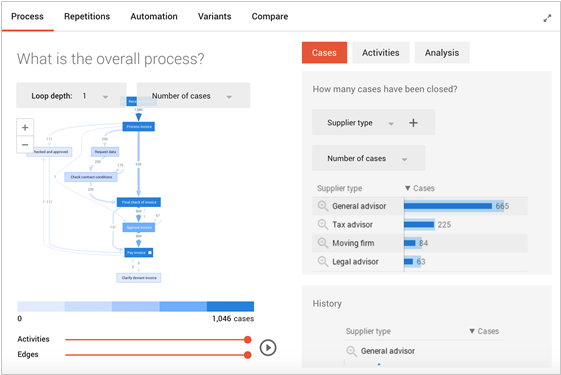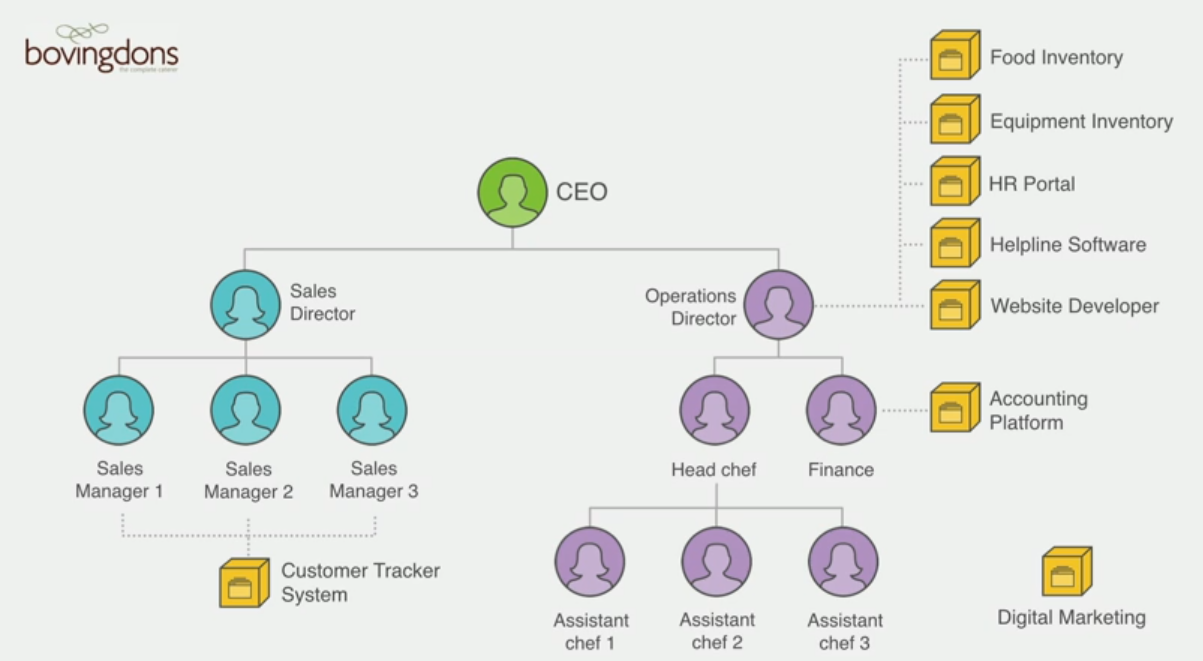- Posted by: aquiliti
- Category: Automation

With McKinsey forecasting a digital-led recovery from COVID-19, it’s evident that making use of Automation and AI will be at the forefront of business leaders’ minds.[1]
The Business Case for process automation is straightforward – look for those highly repetitive and routine activities that exist in any organisations and set up a robot to do them for you.
Sounds too easy?…In reality it is easy, and the chart below gives you a good insight into what is possible and what is already being done around the world.

Source: Aquiliti analysis of public domain automation case studies
You might then well think about and hopefully challenge, the impact that automation will have on those employees whose jobs (or parts of them) are now being outsourced to a robot.
The good news is that “Big Business” and the CEO’s who run these large organisations know that the only way to be successful over the long-term is to invest in their employees, communities and suppliers as well as technology[2].
At Aquiliti we recognise the benefits that automation can deliver but more importantly how to engage employees in the change process. This requires us to look not only at what tasks and activities it makes sense to automate but also what activities are not being done because of a lack of resources or where through training and re-deployment we can start to do things that will enable the business to grow and perhaps create new jobs.
Thinking ahead
Why addressing the issue of employee involvement is so important today is the availability of embedded software tools that can sit on each of our laptops/desktops and monitor every keystroke we make, analyse the data we access and track the time we spend on each task and activity in order to find out what could be automated.
Whilst some may see this as an invasion of privacy, others will accept it as a genuine effort by the business to enable it to survive in an increasing competitive world.
Our job, and those responsible for introducing automation and AI into a business, is to understand the impact it will have on the workforce and to help clients prepare for and manage its introduction sensitively and collaboratively.
The importance of work to each of us will vary and through recent studies we understand the impact of automation well enough to know what aspects of it will be positive and beneficial on the culture of an organisation and what changes are likely to have quite the opposite effect.
Building an employee-centric approach to Automation
Our approach is to start from the perspective that automation will create uncertainty in the minds of your employees so it’s critical to engage them as early as possible in the process and be upfront and honest about what the business is seeking to achieve.
Here are some practical tips for you to consider:
1. Decide on the role of automation – e.g Co-worker
Whilst technology in the workplace may be seen as a threat, most of us have embraced it extensively in our personal lives.
So, our first step is to look at how automation can get rid of those boring and wasteful activities that many of your staff do each day and how this change can benefit your business.
Initially, this strategy may extend to only dipping your toe in the water with what is euphemistically termed a “Proof of Concept” or PoC (basically a pilot project). The chart above gives you a guide as to what areas of opportunity exist in most businesses, also bringing back previously outsourced back office functions is often seen as a good initial candidate for automation.
The plan should explain what areas you are considering for automation and be upfront about the objectives and how staff will be engaged/impacted. Make sure you create a set of metrics that can be used at the end of any project to measure success, including feedback on how employees view the changes that have been made.
Consider what external support you might need and at what stage you will need to engage them.
We suggest you get Executive endorsement for an automation initiative as no one likes surprises, especially CEO’s and Boards. Having said that it should be an easy sell as there are multiple surveys showing C Suite support for business process automation. At a minimum, make sure that those accountable for the organisation’s HR and IT are aware of your approach and that you address any concerns they have.
2. Manage the change
Recognise that this is a significant initiative for any organisation and as with any change program it needs to be led and managed if it is to succeed. Look at how your organisation has managed similar change projects in the past and build on what has worked well and how to avoid obvious mistakes.
You need to create early awareness around what is happening and particularly amongst those that will be directly impacted…no one wants to find out second hand that their new co-worker called Mary is going to be a Robot!
3. Discover what’s worth automating
If you are planning to use some of the new process mining tools that “observe” what people are doing, then make sure you do this with the knowledge of your employees.
Everyone will be keen to get rid of laborious and repetitive tasks or where they are constantly having to copy and paste information from one system to another. Look out for statements like, “I will be glad if I never have to do that ever again!!”.
If you have not seen one before, below is an example of the output from one of the new process mining tools. Activities are recorded in real time and the process maps that are generated are interactive so that you can easily see bottlenecks and create “what if” scenarios.

Example output – UiPath Explorer
N.B with many of us now working from home and the widespread use of videoconferencing you can also record someone taking the team through a process to see if it’s suitable for automation. You can quickly see what tasks, activities, or the lack of access to information is slowing things down.
The involvement of staff in this process cannot be overstated, as it is at this point you are seeing how well your business operates today and how you can harness the input and ideas from your staff to make things better.
Remember that many business processes have probably not been looked at for years and organisations have lots of IT systems that have been around for some time and do not work together very well.
To up the level of employee engagement some organisations run Hackathons or offer prizes for coming up with creative solutions.
4. Understand your IT environment
As Robotic Process Automation (RPA) is largely about automating tasks that staff perform using your current IT software, it is a great idea to find out just how easy (or difficult) this software is to use.
It’s often difficult to really know all of the systems your organisation uses so, a useful start point is to take your organisation chart and try to map the different systems/or ERP modules that are being used by each department or business unit. Your IT Team is the obvious place to start and may already have this information
Also try to flag who the person responsible for each system or application is and don’t be surprised if you can’t find an “owner” for some of them.
An example of an updated organisation chart is shown below and was prompted by some interesting work by Nadjia Yousif that looks at the ownership of IT systems and getting the most out of them. You can find out more about this by watching Ted Tech Talk Podcast – https://podcasts.apple.com/au/podcast/ted-talks technology/id470624027?i=1000431393131
Once you have identified the key systems or applications you can then talk to users to understand how well it meets their needs, how well it is integrated with other systems and what steps might be possible to automate to improve user experience.

Source: Ted Tech Talk by Nadjia Yousif
5. Plan for the impact on your employees
Once you have assessed what business processes or tasks might be of value to automate, start planning for the impact that the automation will have on your employees and how this is to be managed. Be mindful that employees will naturally be concerned for their jobs as well as the long-term sustainability of the business.
The chart below[3] is the result of some recent in-depth research done on the “meaningful value of work” and how automation may be perceived as a threat or an opportunity.

Source: Published on-line 01 November 2019
We trust that this article has been of interest and value to you should you be considering automation.
If you would like to find out more information on this topic or need help in developing an inclusive automation strategy, please call us on +61 (0)2 9262 1995 or send an email to info@aquiliti.com.au
[1] https://www.mckinsey.com/business-functions/mckinsey-digital/our-insights/the-digital-led-recovery-from-covid-19-five-questions-for-ceos
[2] https://opportunity.businessroundtable.org/ourcommitment/
[3] https://link.springer.com/article/10.1007/s13347-019-00377-4
